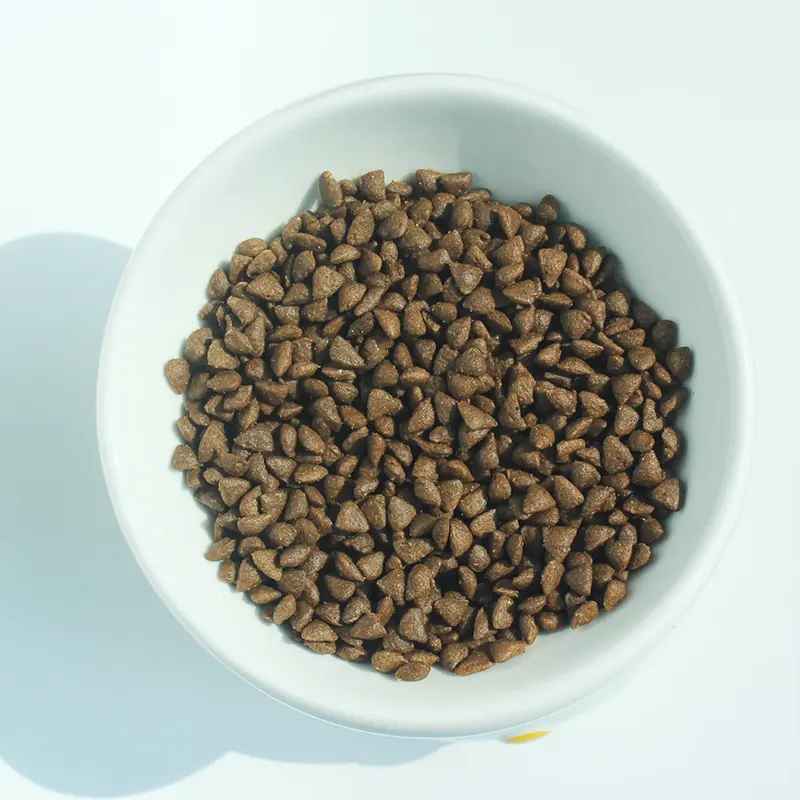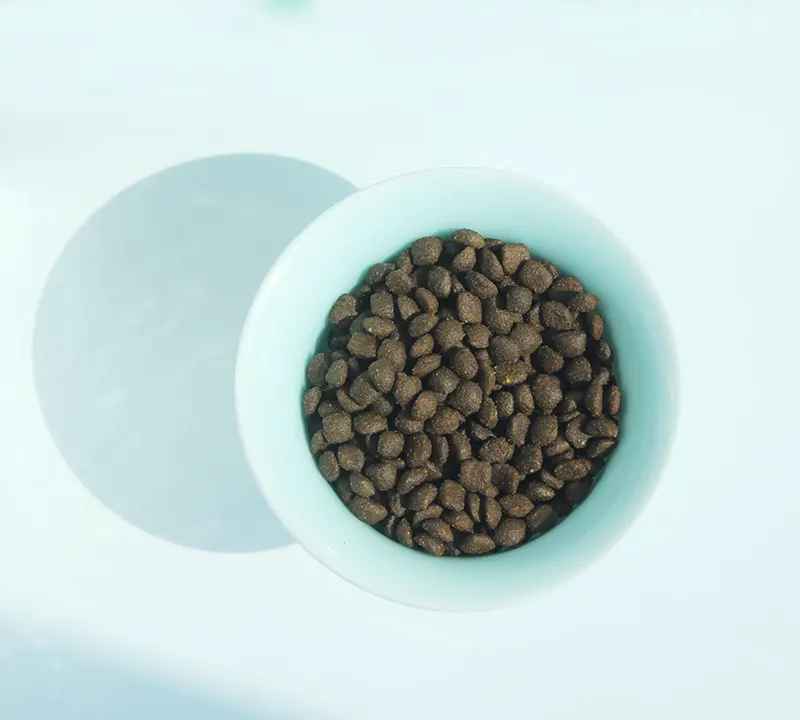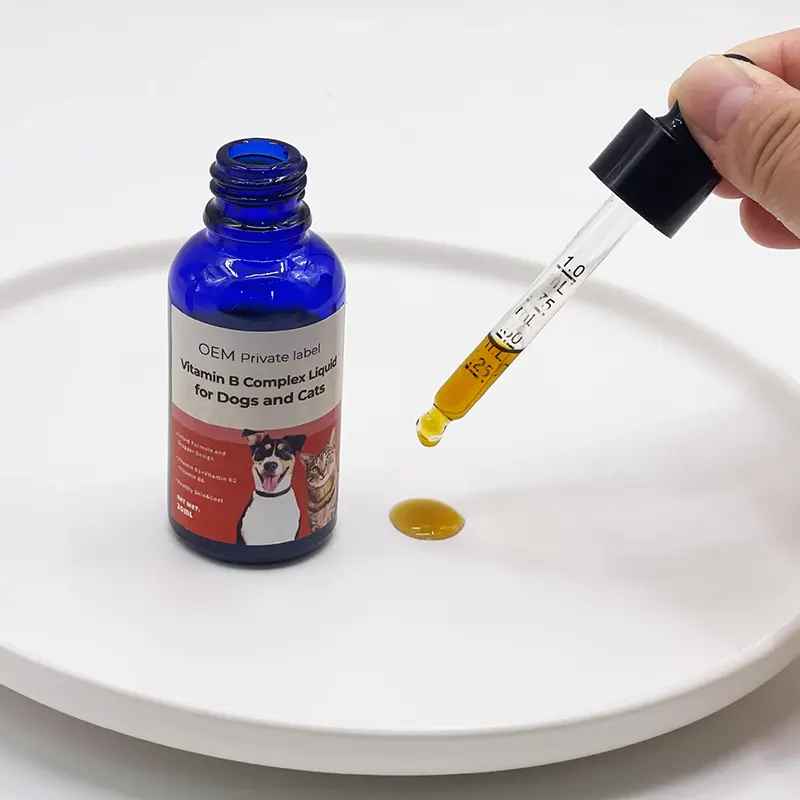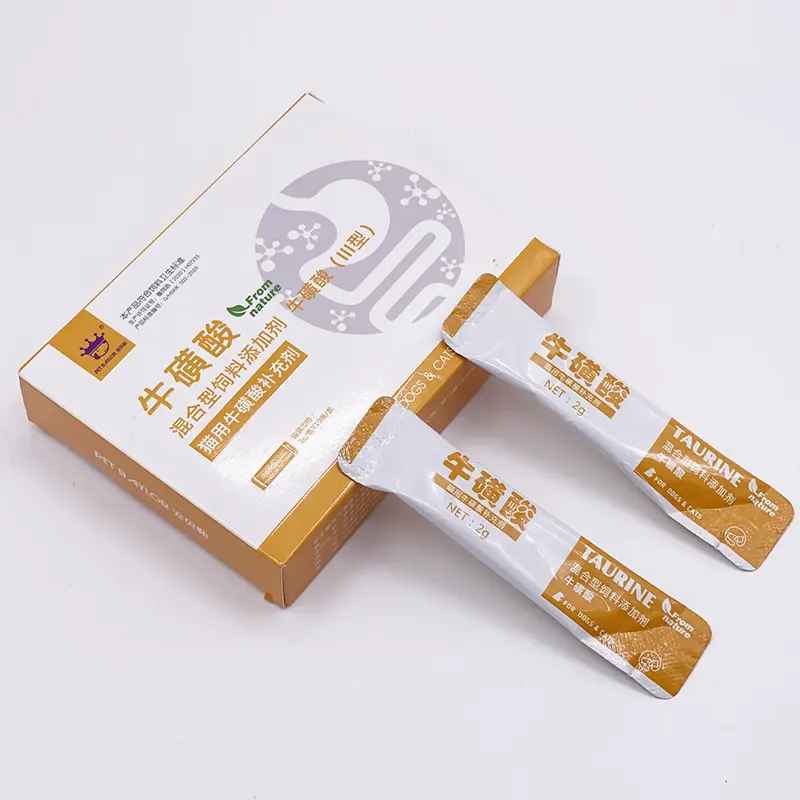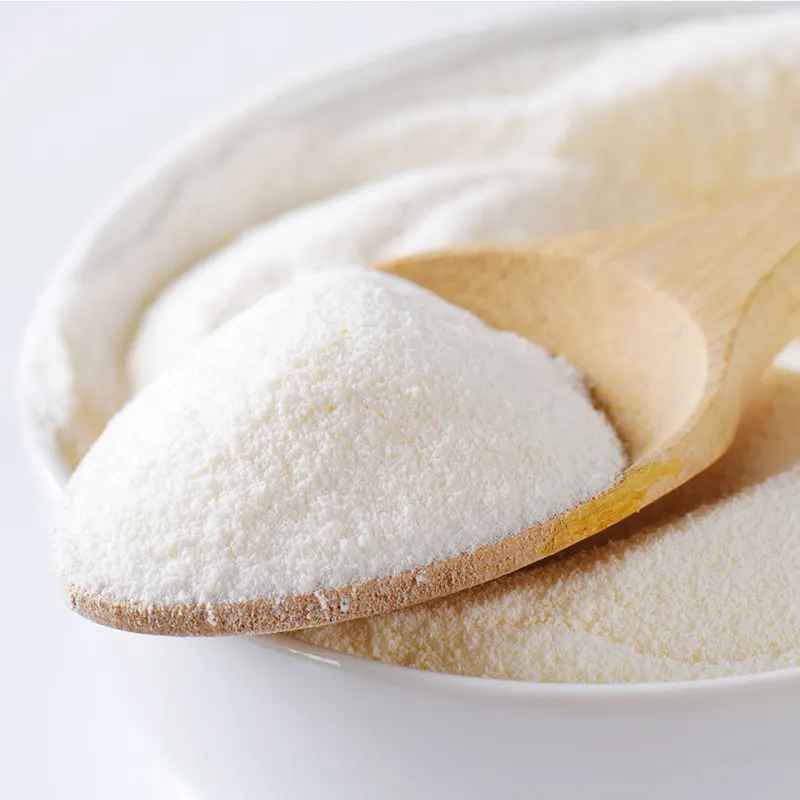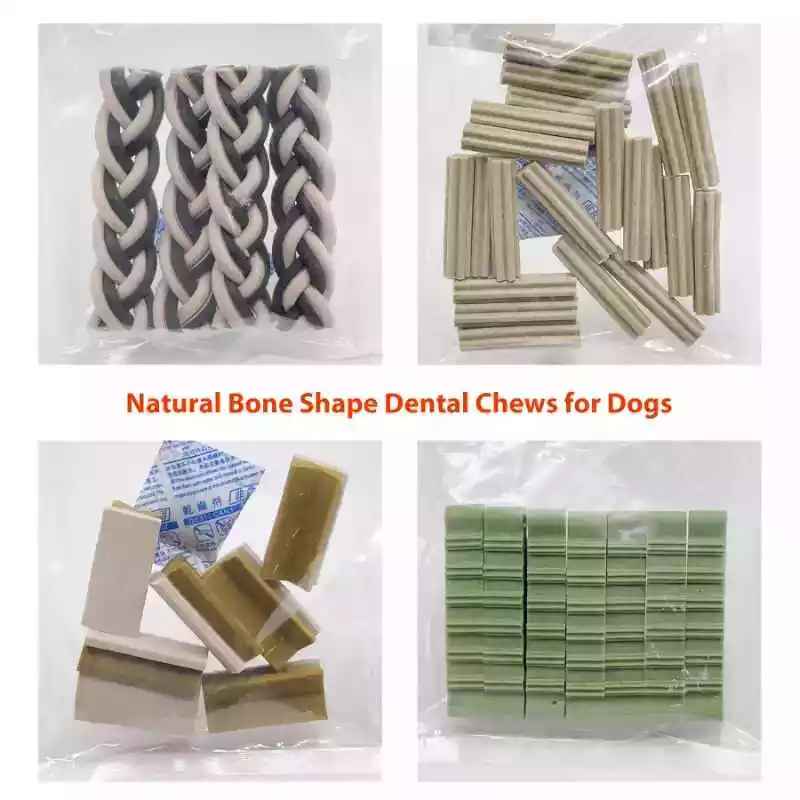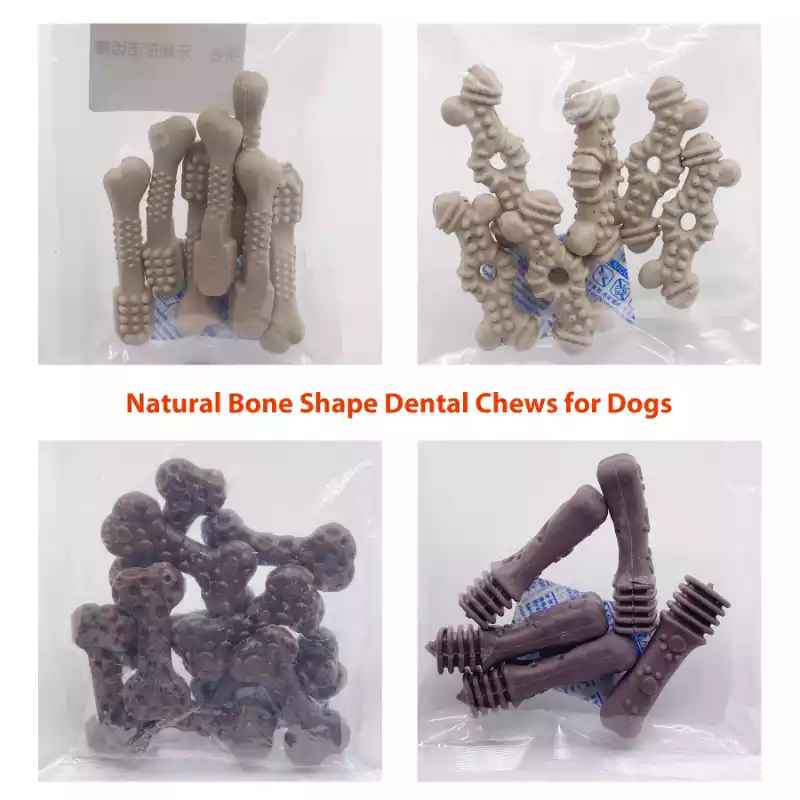Ultimate Guide to Homemade Dog Food Methods and Recipes
Homemade dog food has the obvious advantage of being very healthy for your dog, as well as helping your dog to avoid allergens it also ensures that the food has ingredients that are fresh, high quality, and easy to digest. Secondly, it ensures that your dog gets a wide variety of food, and since a dog’s diet needs to be as nutritious as a human’s.
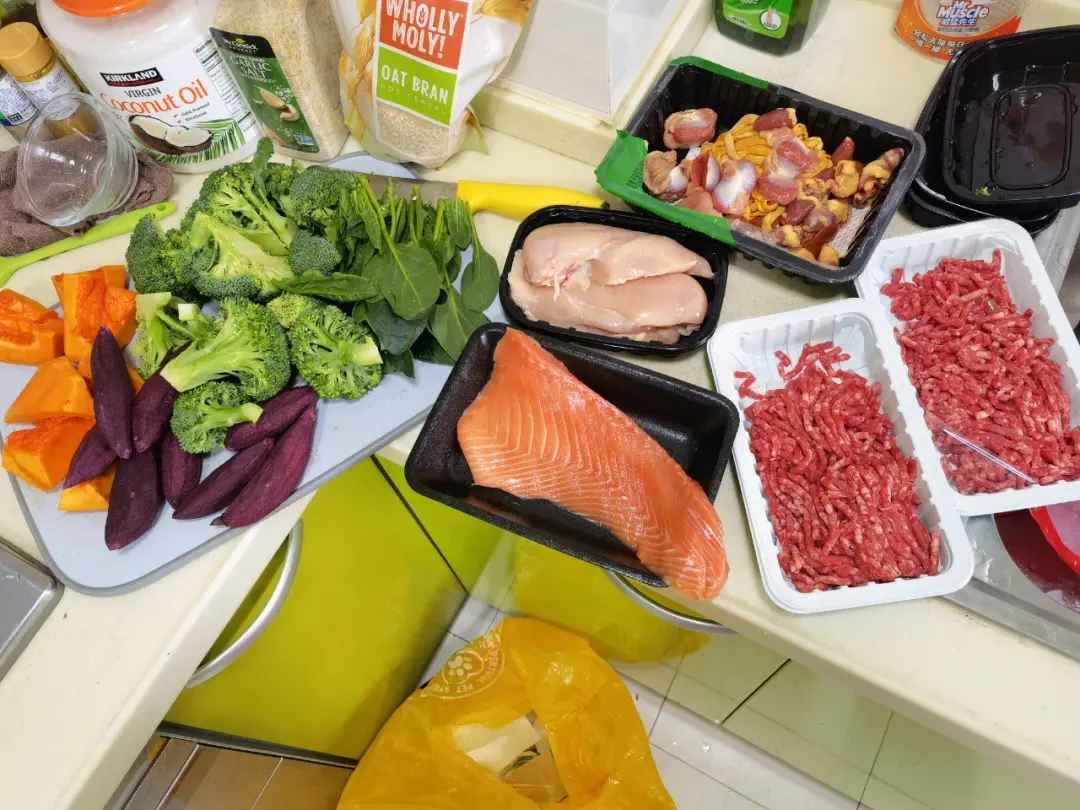
How do you make homemade dog food? Hsviko will explain in detail how to make homemade dog food scientifically based on your dog’s health condition, and will also organize a variety of homemade dog food recipes for you!
How do you make homemade healthy dog food?
Homemade dog food should contain a proper balance of proteins, carbohydrates, fiber, and fats. Vitamins and minerals must be added to the food to ensure complete and balanced nutrition. Homemade healthy dog food requires a combination of balanced nutrition, the freshness of ingredients, and the individual needs of dogs, which vary by size it is also important to rationalize the mix and avoid feeding a single food for a long period.
The following recipes were created under the guidance of a veterinarian and can be used for generally healthy dogs. It is recommended that you consult with your veterinarian before using these recipes in conjunction with your dog’s condition.
Ingredient Ratio
White meat 26%: chicken, duck, goose, rabbit, ostrich, eggs, etc.
Red meat 30%: Cattle, sheep, deer, camel, donkey, and other mammals.
Muscle tissue 10%: heart, gizzard, stomach, lungs, etc.
Fish 10%: swordfish, salmon, cod, fish oil, etc. (Fish should be cleaned of spines.)
Other internal organs 7%: kidneys, testicles, brain, pancreas, ovaries, thymus, etc.
Liver 7%: animal liver
Cereals, potatoes, fruits, and vegetables 10%: carrots, broccoli, pumpkin, zucchini, apples, etc.
Preparation steps
Step 1: Cut the hard vegetables into small pieces, steam them for 15 minutes, and then grate them.
Step 2: Put the rest of the ingredients into a meat grinder and grind them, if you don’t have a meat grinder, you can chop them manually.
Step 3: Mix the crushed vegetables and meat and pinch them to the right size for your dog’s appetite.
Step 4: Steam for another 25 minutes to make sure it’s done!
Take it out and let it cool, drizzle it with fish oil and it’s ready to eat.
Note: Do not add any seasoning, including salt! Not recommended to accompany dog food.
Can be stirred to make balls, suitable for dogs in a hurry to eat, and easier to digest (ideal for small dogs). You can also steam the raw materials and distribute them proportionally, making them more palatable (suitable for big dogs). If you do it often, you can change the ingredients once a week to ensure the freshness of the dog!
Dog probiotic tablets wholesale
- Probiotic Nutritional Cream Supplement for Dogs and Cats
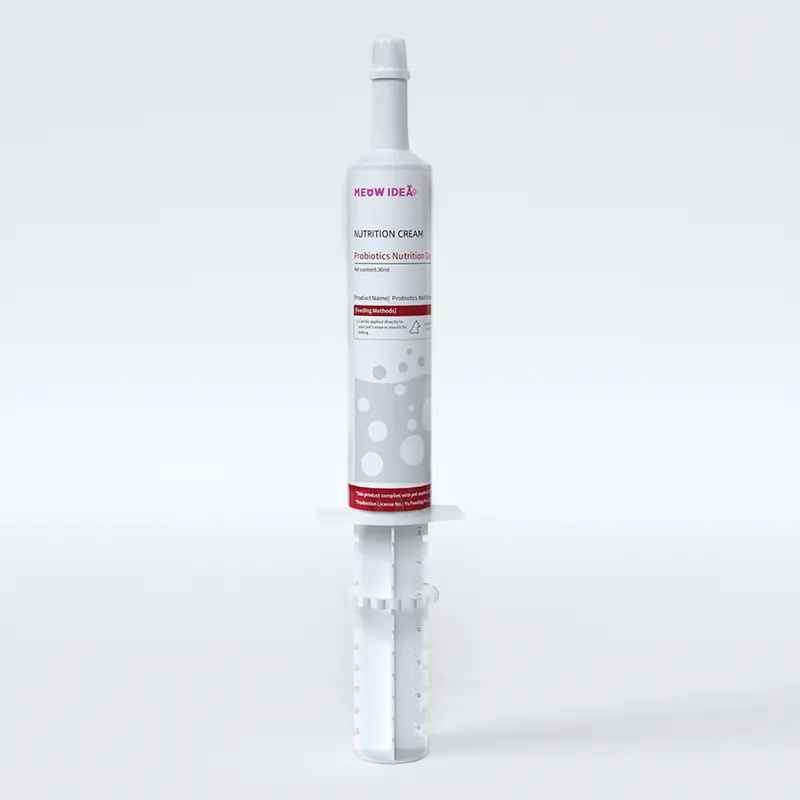
- Chewable Probiotic Supplement for Dogs and Cats

- Probiotic Tablets for Dogs and Cats

- Probiotic Powder for Dogs and Cats
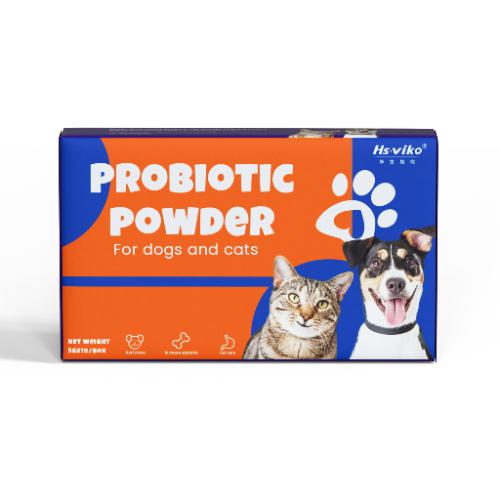
How to make homemade dog food for allergies?
Dogs often develop skin allergies, the common symptoms of dog allergies are constant itching of the skin, hair loss, and skin infections This is when we need to make dog food for our dogs that can relieve its symptoms.
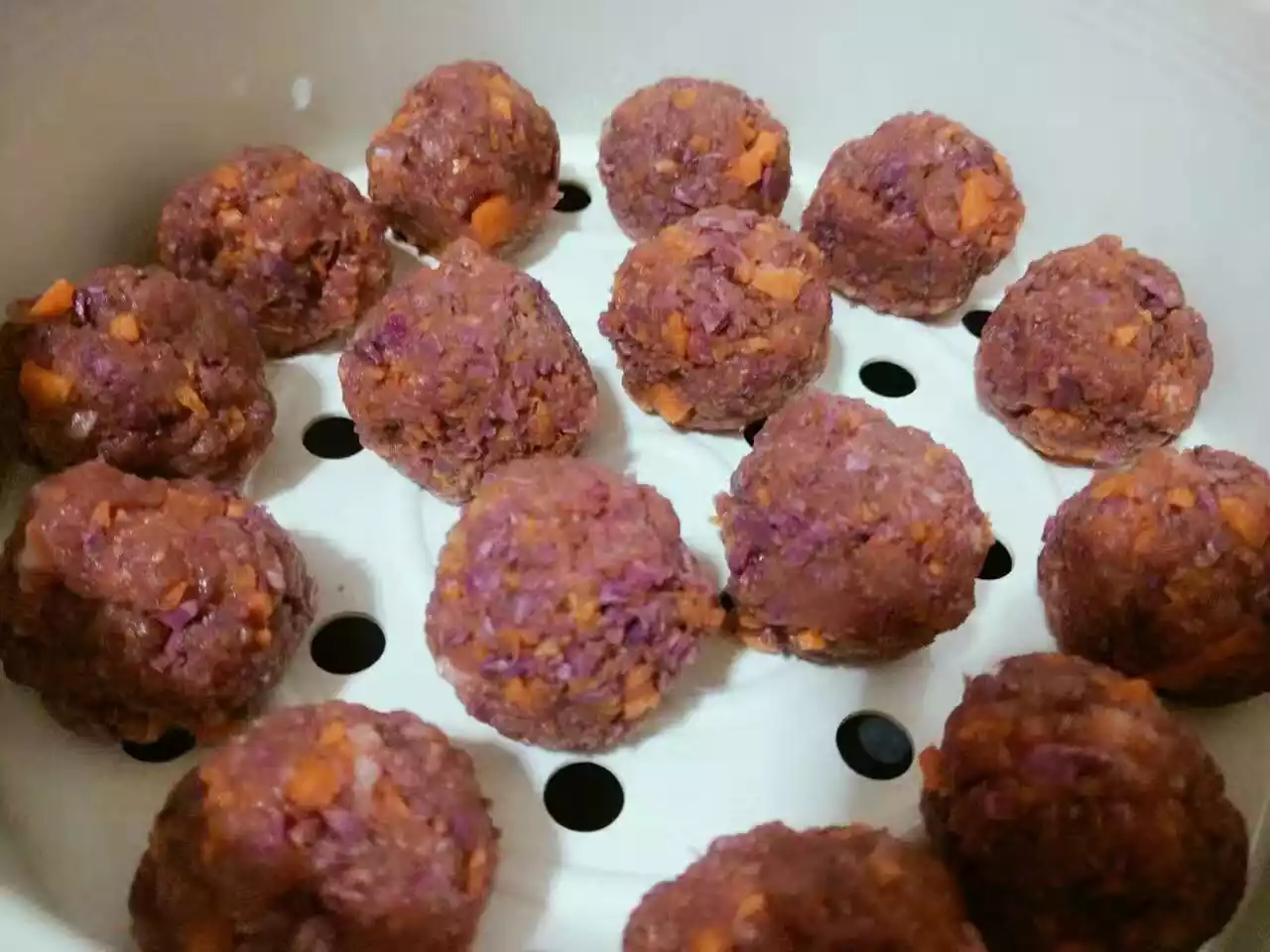
Nutrients Needed for Dog Allergies
Several nutritional supplements must be added to homemade dog food for dogs with allergies to boost the dog’s skin metabolism and relieve itching symptoms. These supplements include omega-3 fatty acids (emulsified fish oil, fish oil softgels) antioxidants (lecithin, vegetables also contain a small amount of antioxidants) protein (fresh lean meats when possible) dietary fiber.
Basic Anti-Allergy Homemade Dog Recipes
The following recipes were created under the guidance of a veterinarian and are suitable for dogs with allergies. Before using them, it is recommended that you consult your veterinarian and use them in conjunction with your dog’s condition.
Ingredients
Single Protein Source: Start by identifying a protein that your dog has not been exposed to or is known not to trigger an allergic reaction, such as duck, turkey, rabbit, or fish (e.g. salmon, make sure it’s boneless and has no spines). Avoid common allergens such as beef, chicken, or pork.
Low-carb sources: Choose low allergy-risk carbohydrates such as sweet potatoes, pumpkin, or brown rice. Initially, choose a single source, such as just sweet potatoes.
Vegetables: Pick vegetables that are easy to digest and hypoallergenic, such as carrots, squash, or leafy greens (be careful to avoid onions, garlic, and other vegetables that are harmful to dogs).
Healthy fats: Add a small amount of fish oil or krill oil for dogs to provide essential fatty acids and promote healthy skin.
Procedure
Step 1: Cook selected protein ingredients to remove fat and bones; vegetables and carbohydrates are also cooked separately.
Step 2: Mix all the cooked ingredients well and add a small amount of fish oil or olive oil as required after ensuring the temperature is right.
Step 3: Divide the prepared dog food into single-meal portions. Once cooled, refrigerate or freeze and thaw before each feeding.
Precautions
Single Ingredient Principle: Maintain this single ingredient formula for at least 6-8 weeks initially to see if your dog’s allergy symptoms improve.
Gradual introduction of new ingredients: If your dog’s symptoms subside, try introducing new ingredients one at a time, adding one at a time, and observing for a few days to see if there is any allergic reaction.
Water quality: Make sure your dog is drinking clean water, preferably filtered tap water, and avoid giving your dog milk or other drinks that may cause allergies.
Monitor reactions: closely observe your dog’s reactions to the dietary changes, including skin condition, digestion, and energy levels.
Veterinary consultation: Before you start making homemade dog food, it’s a good idea to consult with a veterinarian or pet nutrition expert to ensure that the recipes are nutritionally balanced, especially for dogs with special health needs.
Making homemade anti-allergy dog food is a gradual process of exploration and adjustment; patience and careful observation are key.
High Quality Dog Food Wholesale
How to make homemade dog food for kidney disease
Buying finished dog food directly can be difficult for many dogs to swallow or even aggravate their kidney disease, in which case homemade dog food is usually recommended. Dogs with kidney disease usually suffer from edema loss of appetite, and in severe cases, anemia. It is often recommended that dogs eat more frequent and smaller meals to minimize the stress on the kidneys. Add more vitamins, minerals, and organic products.
Basic Low-Protein Kidney Disease Dog Food Recipes
The following recipes have been created under the guidance of a veterinarian and are suitable for dogs with kidney disease, you are advised to consult your veterinarian before using them in conjunction with your dog’s condition.
Ingredient Ratio
Low-phosphorus protein source: cooked white meat chicken breasts (skin removed) or freshwater fish (e.g., bass), about 15-25% of the total diet. Choose low-fat, easily digestible proteins.
Complex carbohydrates: Cooked brown rice or oats, easily digestible and low in phosphorus, about 50% of total servings.
Low-phosphorus vegetables: Cooked squash, carrots, and spinach provide fiber and vitamins, about 20% of the total serving. Avoid vegetables high in phosphorus such as peas and cauliflower.
Healthy Fats: Add an appropriate amount of fish oil supplements for dogs or krill oil supplements to provide essential fatty acids that contribute to skin and kidney health.
Hydration: extra water or low-sodium chicken broth to ensure adequate water intake for your dog.
Preparation Steps
Step 1: Cook chicken breasts or fish, remove bones and skin, and cut into small pieces.
Step 2: Cook brown rice or oats while steaming or boiling vegetables to keep them soft and digestible.
Step 3: Mix all the cooked ingredients, add fish or krill oil and the right amount of water or chicken stock to ensure the food is moist and digestible.
Step 4: Divide the prepared dog food into single meal portions, refrigerate or freeze, and thaw to room temperature before each feeding.
Precautions
Monitor progress: Bring your dog back to the veterinarian regularly to monitor kidney function indicators and weight changes, and adjust recipes as appropriate.
Avoid high-phosphorus additives: Avoid phosphorus-containing flavorings and additives when making homemade.
Supplementation: Dogs with kidney disease may need additional vitamin B complex, antioxidants, and restricted phosphate binders, be sure to add them as prescribed.
Gradual Conversion: When transitioning from the original food to homemade food, mix the old and new foods gradually, usually taking 7-10 days to complete the conversion to prevent gastrointestinal upset.
- Liquid Calcium Supplement for Dogs and Cats
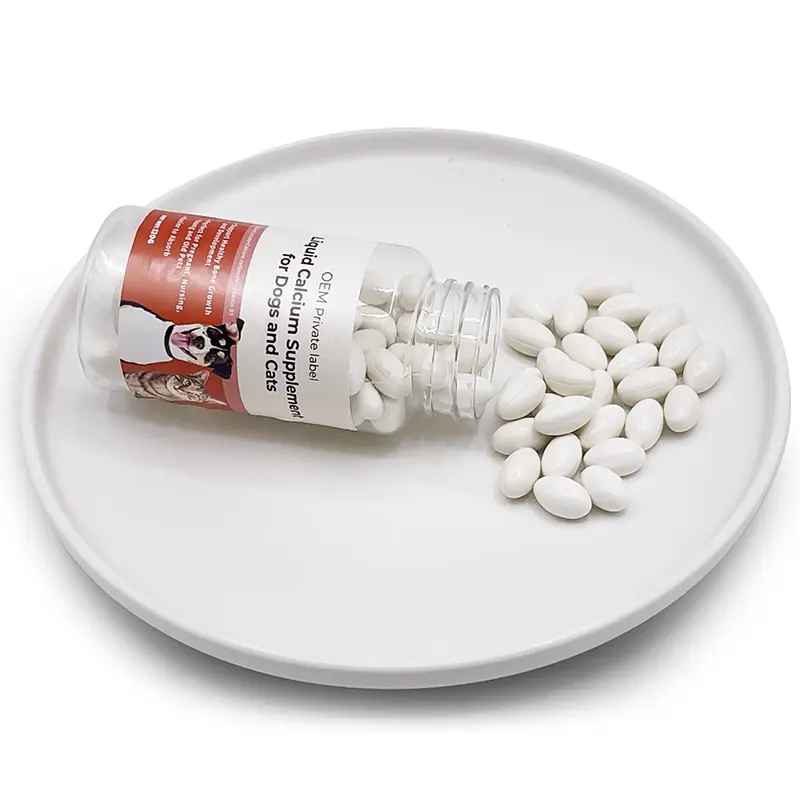
- Goat Milk Calcium Supplement for Dogs and Cats

- Chewable Glucosamine Chondroitin for Dogs and Cats
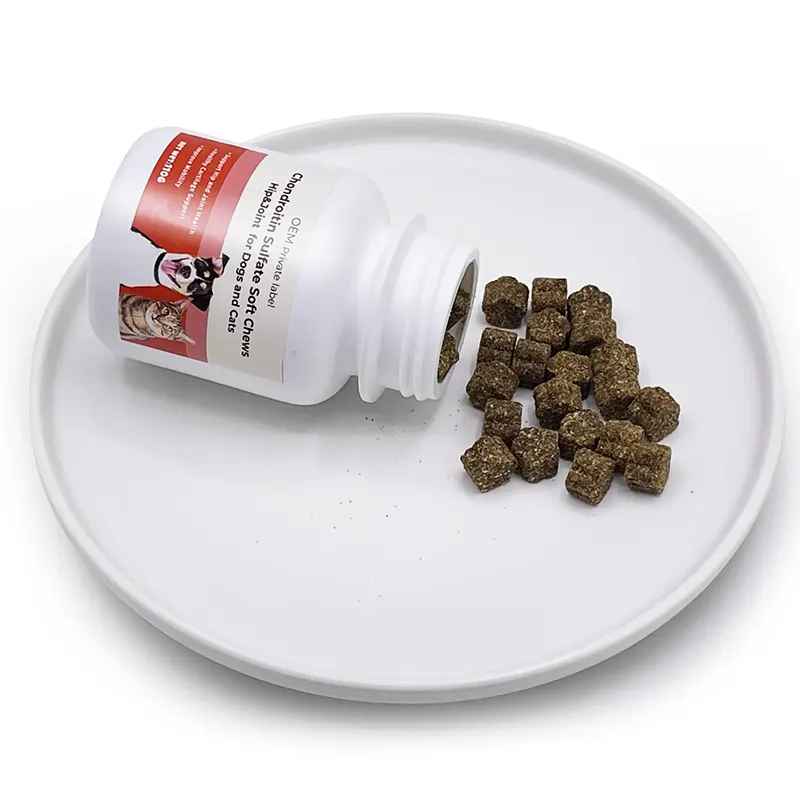
How do you make homemade dry dog food?
Dogs through chewing dry dog food to help the dog’s oral health can effectively prevent the production of dental disease in dogs, while dry dog food with less moisture can increase the dog’s sense of satiety, can effectively control the dog’s weight, long-term eating dry dog food can also help dogs form good eating habits, effectively avoiding the phenomenon of picky eating dogs. Homemade dry dog food is more complicated than wet food and requires some equipment and time, but can provide a longer shelf life.
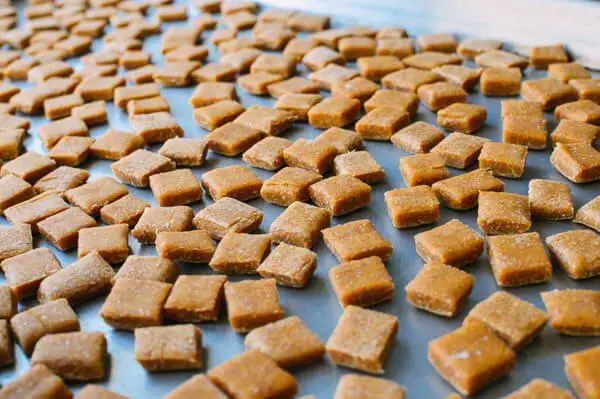
The following dry dog food recipes were created under the guidance of a veterinarian, and you are advised to consult your veterinarian before using them in conjunction with your dog’s condition.
Preparation tools: food dehydrator or oven, mixing bowl, blender, baking sheet, airtight container.
Ingredients
Chicken breast or fish: 500g
Oatmeal or whole wheat flour: 2 cups
Vegetables (e.g. carrots, spinach, pumpkin): 200 grams
Eggs: 2
Fish oil or krill oil for dogs: moderate (provides essential fatty acids)
Cooking steps
Step 1: Cook and chop or grate the meat, steam the vegetables, and do the same, making sure all ingredients are cooked and easily mixed.
Step 2: In a large bowl, mix oatmeal or whole wheat flour, chopped chicken breast or fish, and chopped vegetables. In a separate container, beat the eggs.
Step 3: Pour the beaten eggs into the dry dog food mixture and add a good amount of olive or flaxseed oil.
Step 4: Stir the mixture with clean hands until all ingredients are evenly mixed.
Step 5: Divide the mixture into small balls or cookie shapes of appropriate size.
Step 6: Place the balls or cookies on a baking sheet or parchment paper.
Step 7: Preheat the oven to 180 degrees Celsius (350 degrees Fahrenheit).
Step 8: Place the baking sheet in the oven and bake for about 20-30 minutes until the dry dog treats are crisp and golden brown.
Step 9: Once baking is complete, allow the dry dog food to cool to room temperature.
Step 10: Store dry dog food in an airtight container in a dry, cool place.
Precautions
Nutritional balance: Homemade dog food must consider comprehensive nutrition, especially calcium-phosphorus ratio, amino acid balance, etc. It is best to design recipes under the guidance of a veterinarian or pet nutritionist.
Safety and hygiene: Ensure all tools and ingredients are sanitized during handling to avoid food contamination.
Palatability and digestibility: When trying the food for the first time, pay attention to the dog’s reaction to eating and digestion, and adjust the recipe at the right time.
Trial and transition: When introducing new food, replace it gradually and observe whether it causes allergies or indigestion.
Making homemade dry dog food can be challenging, but with careful preparation, it is possible to personalize a healthy diet for your pet. However, given the importance of nutritional balance, professional guidance is highly recommended.
Best Dog coat care supplements
- Lecithin Soft Chews for Dogs and Cats
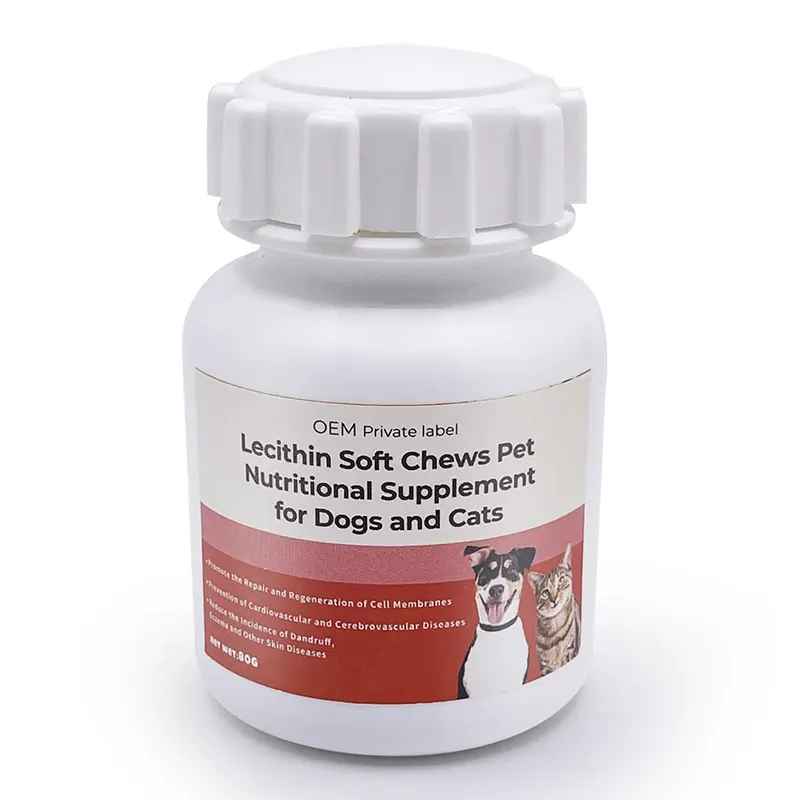
- Lecithin Capsules for Dogs and Cats
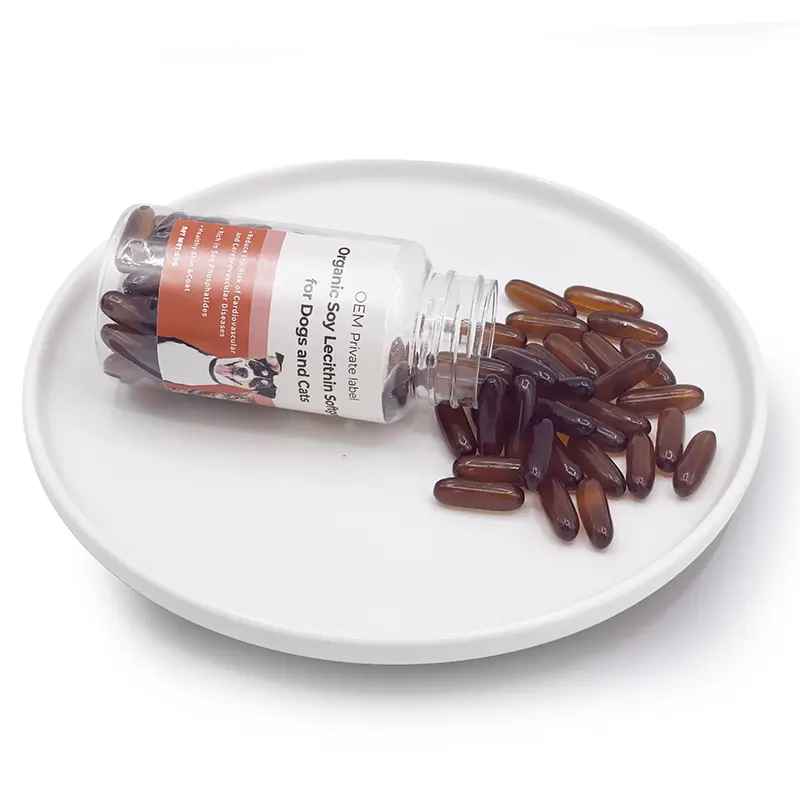
- Hairball Control Gel for Cats
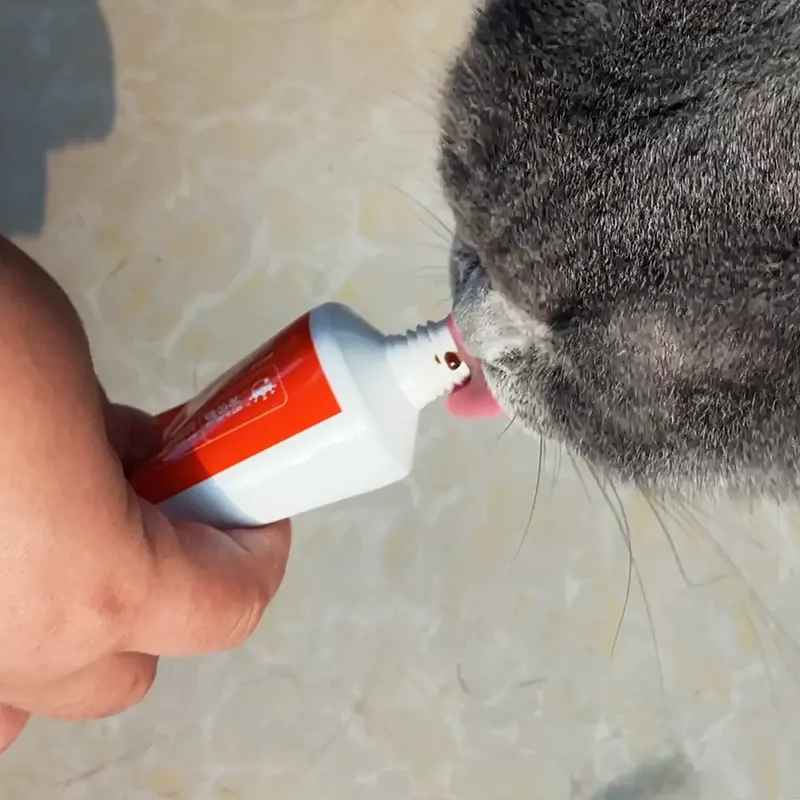
- Best Hairball Control Tablets Supplement For Cats
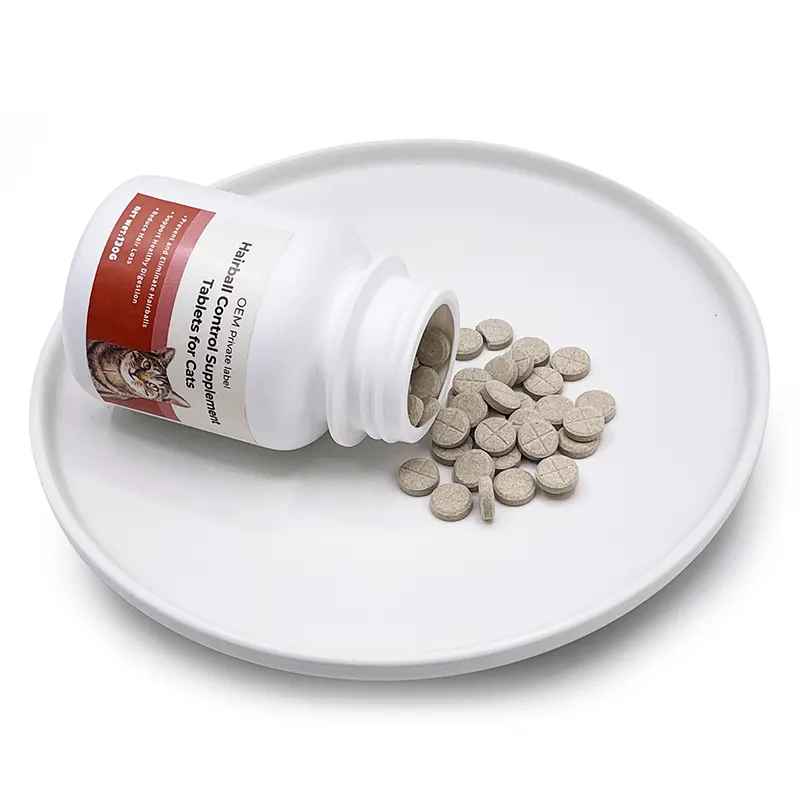
- Best Krill Oil for Cats and Dogs

- Omega 3 Deep Sea Emulsified Fish Oil for Pets

How to Make Homemade Dog Food for Diabetic Dogs
Dogs with diabetes need to strictly control their sugar intake, increase dietary fiber, avoid sudden food changes, and take moderate vitamin and mineral supplements. Keep an eye on your dog’s weight as well as blood sugar changes.
The following recipes are created under the guidance of a veterinarian and are suitable for dogs with diabetes, you are advised to consult your veterinarian before using them in conjunction with your dog’s condition.
Ingredient ratios
Low-fat protein: 200g cooked chicken breast or turkey (skin removed)
Low GI Vegetables: 100g of cooked green leafy vegetables (e.g. spinach, kale) and carrots
Complex carbohydrates: small amount of cooked brown rice or oats 50g (be careful to control the total amount and adjust as needed)
Healthy fats: 1 tbsp fish oil or krill oil
Water
Steps of operation
Step 1: Cook and chop the chicken breasts, wash and chop the vegetables and steam them.
Step 2: Cook brown rice or oats, controlling the moisture so that it is drier.
Step 3: Mix all cooked ingredients well and add fish oil or krill oil for dogs.
Step 4: Add the right amount of water as needed to keep the food from being too dry for your dog’s digestion.
Precautions
Avoid high-sugar ingredients: Do not add high-starch vegetables such as potatoes and sweet potatoes, as this may cause a rapid rise in blood sugar.
Balanced Nutrition: Diabetic dogs need balanced nutrition, especially protein, fat, and moderate amounts of carbohydrates. Consider adding pet-specific vitamin and mineral supplements.
Regular monitoring: After adjusting the diet, monitor your dog’s blood sugar levels regularly to ensure that recipes are appropriate for his or her health.
Veterinary Consultation: Before you start making homemade dog food, be sure to consult with a veterinarian or pet nutrition expert to ensure that the recipes meet your dog’s individual needs.
Portion control: Accurately calculate the portion size of each meal based on your dog’s weight and activity level to avoid overdoing it and causing weight gain that can aggravate diabetic conditions.
Freshness: Homemade dog food should not be stored for too long. Make a small amount at a time, preferably in the refrigerator, and consume it within 3-4 days.
Keep in mind that every dog is different recipes need to be individualized and it is important to keep a close eye on your dog’s health response when implementing any dietary changes.
- Chewable Glucosamine Chondroitin for Dogs and Cats
- Goat Milk Calcium Supplement for Dogs and Cats
- Liquid Calcium Supplement for Dogs and Cats
How to Make Homemade Dog Food for Older Dogs
Older dogs experience a gradual decline in their physical functions, so they need to choose an easily digestible, highly nutritious dog food that is supplemented with the right amount of calcium, phosphorus, and vitamin D to maintain bone health. When making homemade dog food for older dogs, special attention should be paid to the food’s digestibility, nutrient density, and joint health, while reducing salt and fat intake to accommodate their slowed metabolism and possible health problems.
The following recipes were created under the guidance of a veterinarian and are suitable for older dogs, you are advised to consult your veterinarian before using them in conjunction with your dog’s condition
Ingredient ratios
Low-fat protein: cooked lean beef or chicken breast 200g
Easily digestible carbohydrates: cooked brown rice or oats 100g (elderly people can reduce the proportion of carbohydrates)
High-fiber vegetables: steamed and chopped carrots and leafy greens (e.g. spinach) 50 grams
Joint protection: cooked pumpkin or sweet potato (rich in beta-carotene and fiber) 50g, and a small amount of fish oil (rich in Omega-3 fatty acids)
Calcium supplement: grated eggshells (cleaned and toasted and ground) or a pinch of calcium powder
Water
Operation Steps
Step 1: Cook and cut meat into small pieces, steam and chop vegetables and squash or sweet potatoes.
Step 2: Cook brown rice or oats to keep the moisture moderate and easy to digest.
Step 3: Place all cooked ingredients in a large bowl, add fish oil and ground eggshells or calcium powder, and mix gently.
Step 4: Add the right amount of water as needed to bring the food to the right moisture level and to avoid over-hardening.
Mix all together well and wrap in plastic wrap in daily portions and place in the freezer! Take it out before eating every day, tear off the plastic wrap, and steam it in a pot for 15-25 minutes, after steaming, you can add freeze-dried and nutritional tablets or probiotic supplements for dogs (to promote dog digestion).
- Liquid B Complex Vitamin for Dogs and Cats
- Taurine Supplements for Dogs and Cats
- Goat Milk Powder Supplement for Dogs and Cats
How to make homemade dog food for small dogs
Dogs at the puppy stage have particularly high nutritional needs, and dog food for puppies is required to be high in protein and fat, with essential vitamins and minerals added. Additionally, proper calcium and phosphorus supplementation is necessary to support bone development.
The following recipes were created under the guidance of a veterinarian and are suitable for small dogs, you are advised to consult your veterinarian before using them in conjunction with your dog’s condition to use them wisely
Ingredients
Low-fat protein: cooked chicken breast 100g (adjustable according to your dog’s weight)
Easily digestible carbohydrates: cooked brown rice or oats 50g (can be reduced for small dogs)
Vegetables: steamed and chopped carrots 20g, broccoli 20g (provides fiber and vitamins)
Healthy fats: a small spoonful of fish oil or krill oil (for healthy skin and coat)
Calcium source: a pinch of cooked eggshell powder (pre-washed, dried and ground)
Water
Cooking steps
Step 1: Cut the chicken breast or fish into small pieces, wash, and cut the vegetables into small pieces.
Step 2: Cook brown rice or oatmeal in a pot of boiling water, and cook the brown rice or oats until soft and suitable for small dogs to digest.
Step 3: In another pot, cook the chicken breasts or fish with the vegetables until they are tender.
Step 4: Place all the prepared ingredients in a bowl, add the fish oil and eggshell powder, and mix gently.
Step 5: Add a good amount of fish oil or flaxseed oil to the mixture to provide essential fatty acids.
Step 6: Add small amounts of water as needed to ensure that the food is neither too dry nor too wet and is easy to swallow.
Precautions
Nutritional Balance: Make sure recipes contain enough protein, fat, carbohydrates, vitamins, and minerals, and consult your veterinarian or pet nutritionist to add pet-specific vitamin-mineral supplements if necessary.
Small pellets: Small dogs eat small amounts of food, so it is advisable to make food small and easy to chew to make it easier for them to chew and digest.
Food safety: Make sure all ingredients are fresh and thoroughly cooked, and avoid raw food to prevent food poisoning.
Adequate feeding: Adjust the daily feeding amount according to your dog’s age, weight, and activity level to avoid overfeeding leading to obesity.
Gradual conversion: If switching from commercial dog food to homemade dog food, the transition should be mixed gradually, usually taking 7-10 days to prevent gastrointestinal discomfort.
Regular assessment: Observe your dog’s weight, mental state, and fecal quality, and adjust recipes or consult a professional if necessary.
Homemade dog food allows better control over the quality of ingredients, but care needs to be taken to ensure complete and safe nutrition. Always make dietary adjustments under the guidance of your veterinarian to ensure that the specific nutritional needs of small dogs are met.
How often should I make homemade dog food?
The purpose of homemade dog food is to ensure that fresh, high-quality, easy-to-digest ingredients can be absorbed by your dog; storing dog food for long periods may result in deterioration or loss of nutrients. The frequency of homemade dog food depends largely on the conditions in which you can store the food and your personal time management. Here are some reference suggestions:
Once a week: many pet owners choose to make dog food once a week, which ensures freshness while not taking up a lot of cooking time too often. Once it’s made, portion it out according to each meal and keep it refrigerated or frozen.
Bi-weekly or monthly: If you have enough freezer space and are willing to prepare more dog food at once, you can choose to make it every two weeks or every month. When doing so, make sure you portion out the dog food in an airtight container, label it with the date it was made, and store it in the freezer. Remove one portion ahead of time to thaw before each feeding.
On-demand: for those owners with more flexible schedules or a preference for more frequent menu changes, the option may be to not have a set cycle, but instead make it on-demand based on the freshness of the ingredients or changes in your dog’s tastes.
Whichever frequency you choose, you need to make sure that all food is thoroughly thawed before feeding and that it will not spoil under safe storage conditions. Also, regularly assess the impact of homemade dog food on your dog’s health and adjust the recipe or frequency of preparation if necessary.
Reading this far I’m sure I’ve addressed your questions related to homemade dog food and finding the right homemade dog food recipe for your dog. Stay tuned to Hsviko for more information on pet health.
One of the most powerful pet product brands in China. With more than ten years of experience in pet supplements is production. Provides one-stop service for pet health care products, medicine and food for the whole world, including customization, OEM, ODM and wholesale.
Related Posts:
- Glucosamine for Dogs: Side Effects, Benefits, and Safe Dosage Guidelines
- Glucosamine & Chondroitin Supplement for Dogs Dosage Guidelines
- Best Canine Glucosamine Chondroitin Guide: Benefits, Dosage, and Side Effects
- Probiotics for Dogs with Allergies: Science-Backed Strains & Dosage (2025)
- Lysine for Dogs Guide: Roles, Benefits and Risks
Search
© 2023-2024. All Rights Reserved. Copyright By HsViko Pet Supplies | Privacy Policy
